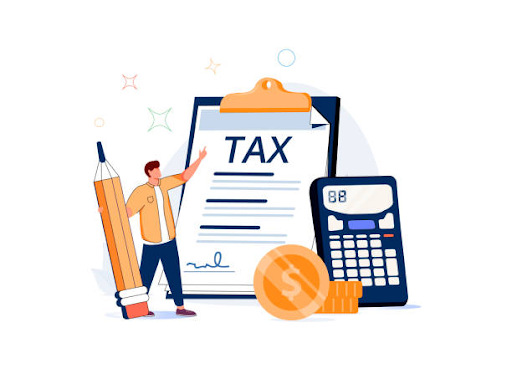
Tara Fisher, CPA, provides a detailed exploration of the recent IRS guidance pertaining to the deferral of employment taxes, particularly focusing on self-employed individuals who benefited from the provisions outlined in the 2020 CARES Act. This article aims to elucidate critical aspects of the tax payment guidance recently disseminated by the IRS, offering a comprehensive overview of the nuances and implications associated with this crucial aspect of tax planning.
Understanding the CARES Act
The CARES Act, officially known as the Coronavirus Aid, Relief, and Economic Security Act, introduced measures enabling self-employed individuals to defer the payment of specific Social Security taxes on Form 1040 for the tax year 2020. This deferral spans the subsequent two years, with half of the deferred Social Security tax due by December 31, 2021, and the remaining half due by December 31, 2022.
Key Insights from the CARES Payment Guidance
Tara Fisher navigates the intricacies of the IRS guidelines, emphasizing crucial details for self-employed individuals seeking to comply with the stipulations of the CARES Act. The IRS specifies that deferred amounts can be paid at any time on or before the designated due date.
The approved methods for remitting tax payments include the Electronic Federal Tax Payment System (EFTPS), credit card, debit card, money order, or check. It is imperative to keep these payments distinct from other tax payments, ensuring that they are correctly applied to the deferred tax balance on the tax year 2020 Form 1040.
Fisher underscores a critical point – the IRS systems may not recognize the payment for deferred tax if combined with other tax payments or submitted with the current Form 1040. This highlights the necessity of a meticulous and segregated approach to these payments.
For those choosing to remit payments by mail, the article advises designating the federal tax payment as "deferred Social Security tax." Similarly, individuals using EFTPS are guided to select "1040 US Individual Income Tax Returns" and "deferred Social Security tax" for proper identification of the payment type.
However, Fisher cautions that IRS websites for credit card or debit card payments lack specifications for identifying payments related to the 2020 Form 1040. This nuanced guidance ensures that individuals make informed choices while selecting their payment methods.
Addressing Challenges: Inability to Pay the Full Deferred Amount
Fisher doesn’t shy away from addressing the potential scenario where a taxpayer may be unable to pay the entire deferred IRS tax payment by the specified due date. In such cases, she advises remitting the maximum amount feasible to minimize penalty and interest charges.
When the full installment amount cannot be paid, the IRS issues a notice of the balance due. Fisher encourages individuals to follow the instructions on the notice, either making a payment or applying for a payment plan. This proactive approach helps manage financial obligations while minimizing the impact of penalties and interest charges.
IRS Cares FAQs: Providing Clarity on Self-Employed Individuals
The article incorporates a section dedicated to addressing frequently asked questions (FAQs) related to the deferral and payment of employment taxes, with a focus on queries pertinent to self-employed individuals. Fisher presents these FAQs, offering clear and concise answers to common concerns.
Noteworthy FAQs include:
Reminder Notices:
The IRS intends to issue reminder notices to employers before each applicable due date. Fisher explains the unique considerations for Form 941 filers who deferred taxes in all four quarters of 2020.
Eligibility for Self-Employed Individuals:
Fisher confirms that self-employed individuals are indeed eligible to defer the payment of 50 percent of the Social Security tax imposed on net earnings from self-employment income during the specified period.
Penalties for Failure to Make Estimated Tax Payments:
Self-employed individuals are reassured that there is no penalty for failure to make estimated tax payments for 50 percent of Social Security tax on net earnings from self-employment during the payroll tax deferral period.
Applicable Dates for Deferred Payment Amounts:
Fisher elucidates the applicable dates by which deferred payment amounts of 50 percent of the Social Security tax imposed on self-employment income must be paid.
Determining 50 Percent of Social Security Tax:
The article provides clarity on how self-employed individuals can determine 50 percent of the Social Security portion of self-employment tax attributable to net earnings from self-employment during the specified period.
Expert Insights and Author Background
Tara Fisher, with over 20 years of experience in tax practice, brings a wealth of expertise to the discussion. Her professional background includes roles at esteemed institutions such as the U.S. Congress Joint Committee on Taxation, PricewaterhouseCoopers, the University of Pittsburgh, and American University in Washington D.C.
As a licensed CPA with both undergraduate and graduate degrees in accounting from the University of Virginia, Fisher’s insights are informed by a robust understanding of tax regulations and practices. Her nuanced approach to explaining complex IRS guidance ensures that readers, whether self-employed individuals or tax professionals, can navigate the intricacies of deferred employment tax payments with clarity and confidence.
Tara Fisher’s article serves as a comprehensive guide for self-employed individuals and tax professionals navigating the IRS guidance on deferred employment tax payments. By addressing key aspects of the CARES Act, providing insights into payment methods, and clarifying FAQs related to self-employed individuals, Fisher empowers readers to make informed decisions and effectively manage their tax obligations.
This expertly crafted article not only disseminates valuable information but also serves as a testament to Tara Fisher’s proficiency in translating intricate tax guidance into accessible and actionable insights. As tax regulations continue to evolve, articles of this nature play a pivotal role in fostering understanding and compliance within the broader community of taxpayers and tax professionals alike.
